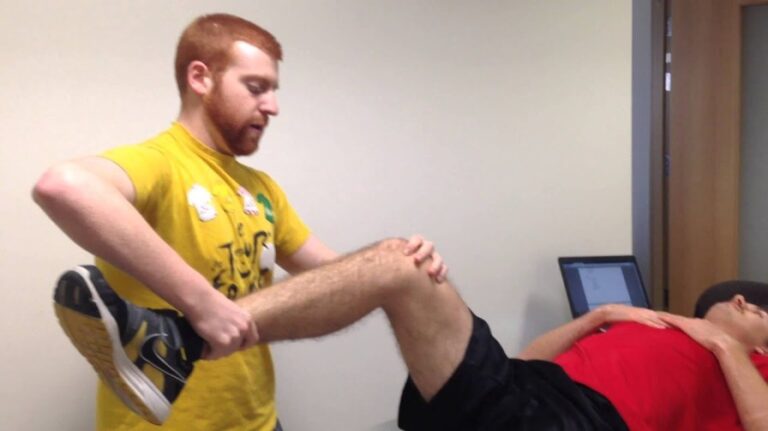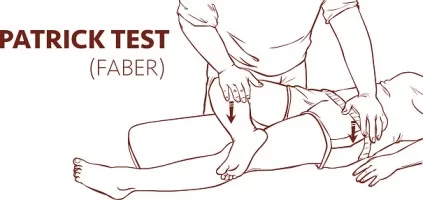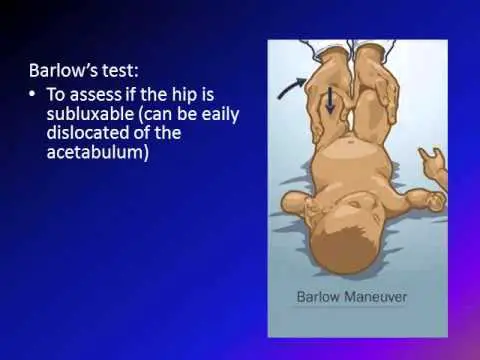Sacroiliac rocking test:
- This test is also known as the knee to shoulder test for SI joints.
- This test is called to sacrotuberous ligament stress test.
- This test is applied by the to clinic check the dysfunction of the sacroiliac joint.
- This clinical test is applied by to therapist when the patient is complaining about SI joint pain & pelvic pain.
What is the purpose of the Sacroiliac rocking test?
- This Sacroiliac rocking test is used to check the integrity of the sacrotuberous ligament.
How do you perform the Sacroiliac rocking test?

- The patient is in the supine position for the test in starting position of the test.
- The examiner [ therapist ] flexes the patient’s knee joint & hip joint fully then adducts the hip joint.
- To perform the test properly, both the hip joint & knee joint must demonstrate no pathology & have the full range of motion ROM.
- The sacroiliac joint is rocked by flexion & adduction movement of the patient’s hip joint.
- To do the test properly, the knee joint is moved toward the patient’s opposite shoulder.
- Some authors believe that the hip joint should be medially rotated means internally rotated as it is flexed & adducted to increase the stress on the sacroiliac joint = SI joint.
- Simultaneously, the sacrotuberous ligament may be palpated for tenderness.
What is the result of the Sacroiliac rocking test?
- Pain in the sacroiliac joints indicates a positive test.
- Care must be taken because the test places a great deal of stress on the hip & sacroiliac joints.
- If a longitudinal force is applied throughout the hip joint in a slow, steady manner for 15 to 20 seconds in an oblique & lateral direction, further stress is applied to the sacrotuberous ligament.
- While performing the test, the examiner [ therapist ] may palpate the sacroiliac joint = SI Joint on the test side to feel for the slight amount of movement that normally is present.







